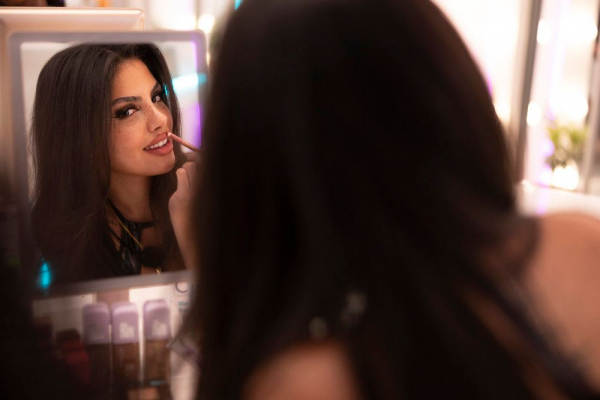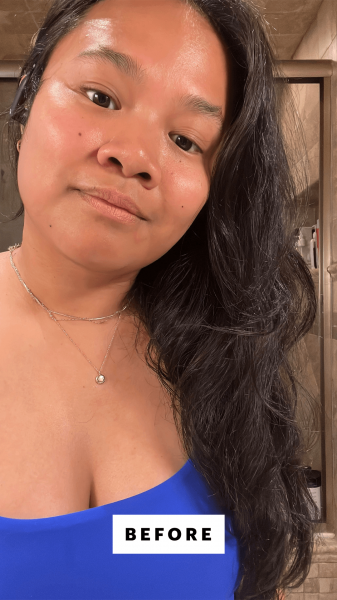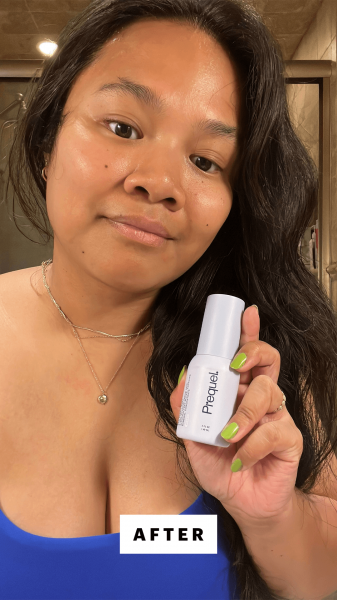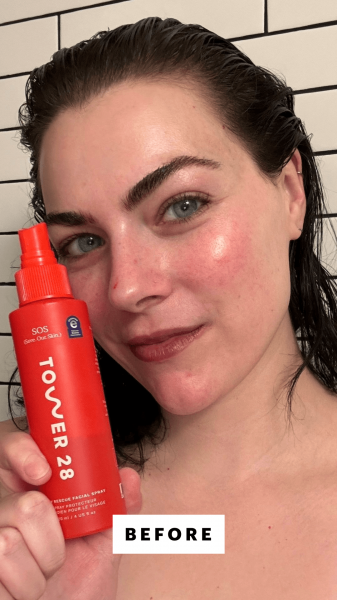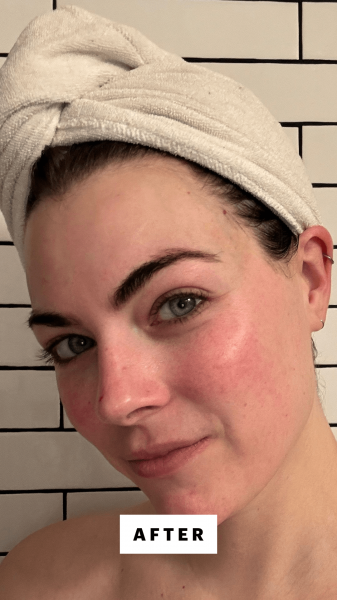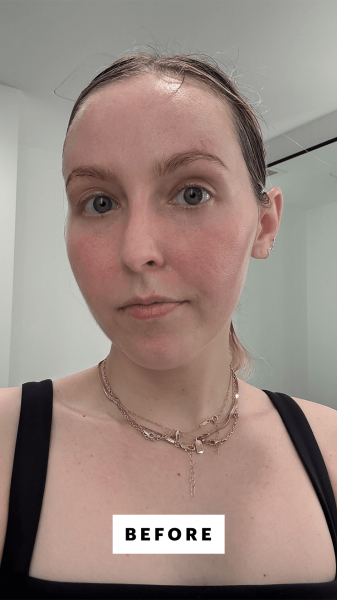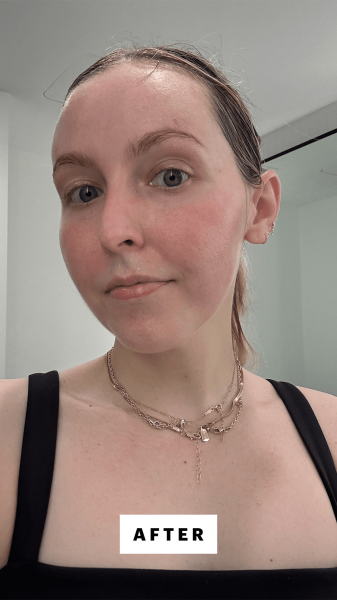
Everyone Wants to Know What Huda Mustafa From “Love Island USA” Smells Like
 Photo: Courtesy of PeacockSave this storySave this story
Photo: Courtesy of PeacockSave this storySave this story
All products featured on Allure are independently selected by our editors. However, we may receive compensation from retailers and/or from purchases of products through these links.
In The Scenario, reporter Kirbie Johnson takes readers behind the scenes of the buzziest movies and TV shows to reveal how the best wigs, special effects makeup, and more are created. For this edition, Johnson spoke with Love Island USA season 7 contestant Huda Mustafa to set the record straight on which products she really used in the villa.
Season six of Love Island US manufactured several bonafide beauty influencers, like islanders Leah Kateb, who’s been named the chief creative officer of fragrance brand Skylar, and JaNa Craig, who’s partnered with brands like Maybelline, Shea Moisture, and Flamingo since exiting the villa. The show’s impact is no different following season seven, with brands sliding into the comment sections to cozy up to islanders, including winner Amaya Espinal, Olandria Carthen, and Huda “mamacita” Mustafa, who each had viral moments on the show—and are clearly obsessed with beauty. But what brands were they actually using on the show?
A few days after her release from the villa, Mustafa, a 24-year-old fitness instructor, chatted with Allure about her love for makeup, which runs deep. “Remember when everyone was doing the [Anastasia Beverly Hills] Dip Brow situation? I would do my eyeliner and make little tutorials,” she says. “I was obsessed with makeup back [during the] Kylie lip challenge—I was doing the overlining lip thing. Even now, I am obsessed with makeup and playing around.”
During season seven, we saw the women of the cast using a lot of Maybelline and CeraVe products while getting ready because the glam suite was stocked with those brands—they were sponsors, after all. But for her daily routine, Mustafa packed a slew of her other favorites. “I have a very thorough makeup routine,” she says. “I like Benefit Cosmetics [Hoola] Bronzer, the Charlotte Tilbury [Beauty Light Wand] highlighter and [Airbrush Flawless] setting spray. I love Hourglass brushes and concealers. I loved the Maybelline concealers as well in the villa. I used the Natasha Denona primer.” As for her lips, she says she usually only wore a little MAC lip liner because her natural lip color is flushed on its own.
Photo: Courtesy of Peacock
She did not have lash extensions, which is why she was able to keep a consistent look throughout the season. Instead, she used a long-lasting glue to apply a D-curl lash cluster to the outer corner of her eyes every few days.
Her daily makeup routine is in part what drew her so close to Espinal. “When we would get ready, I would catch her staring at me, and sometimes she would catch me staring at her—we just admire each other.” Mustafa even says Espinal had the best makeup skills in the villa. “She eats down every time. She has such a good base… her face is perfect.”
While watching this season, you may have noticed the women had little or no visible nail growth between manicures despite being on location over the course of six weeks. Their sets always looked fresh, even though there were no nail techs on location. Press-ons were their saving grace; Mustafa bought a few pairs from Amazon. Her feet, on the other hand…
“A lot of the guys in the villa complimented my scent 24/7. The number one compliment I got was, ‘You smell so good.’”
“When I tell you, my toes were hanging on for dear life, we were fending for ourselves,” she jokes. “I got them French [tip] before the villa, and then they grew out like nobody's business. The challenges fucked them up. They looked atrocious. The motherfuckers were looking like talons. I love getting my toes done. So I was like, ‘This is no bueno.’” Thankfully, “We all knew that we had crusty feet, so no one really judged anyone.”
Mustafa has amassed 4.1 million followers on Instagram and 5.6 million on TikTok, the largest following of any season seven contestant. People are clearly interested in her, especially how she smells: People on TikTok have been stocking up on one vanilla fragrance after videos that used AI to make it sound like Mustafa wore said scent on the show circulated widely (Mustafa confirmed she did not make any of this content herself, nor does she wear the scent featured).
This obsession goes for the other islanders, too. “A lot of the guys in the villa complimented my scent 24/7, even when I went to bed,” she says. “Everybody would comment because I would hug everybody down the line, and the number one compliment I got was, ‘You smell so good.’”
Photo: Courtesy of Peacock
She doesn’t wear just one fragrance, which makes her pretty sure no one has cracked the code to her signature scent just yet. “I literally hate when people smell like me,” she says. “I have two different lotions I put on and like four different perfumes. Someone could be like, “Yeah, I use [the same] perfume, and I'm just like, “Yay. [Long pause.] Me too, girlfriend.’ But we don't smell the same because I wear so many different things. It comes down to things like your body wash, your body oil in the shower.”
Mustafa’s favorite fragrance is Burberry Her; she also bought Pure Fiji’s Noni-scented Hydrating Body Lotion while on location; it smells both tropical and floral with notes of noni fruit, lotus flower, hibiscus, and amber. “That’s the one that everyone in the villa bought because I was wearing it,” she says.“I smelled so good.”

6 Best Hypochlorous Acid Sprays to Calm and Refresh Skin
 Collage: Gabrielle Langdon; Source images: Courtesy of brandsSave this storySave this story
Collage: Gabrielle Langdon; Source images: Courtesy of brandsSave this storySave this story
All products featured on Allure are independently selected by our editors. However, we may receive compensation from retailers and/or from purchases of products through these links.
We’re not saying hypochlorous acid sprays can do everything…but these multitasking skin-care products do tackle an impressive array of issues. The active ingredient, hypochlorous acid, forms when chlorine reacts with water and has potent antimicrobial properties—making it an effective salve for skin conditions ranging from rosacea to sunburns and more. Rachel Day, MD, a board-certified dermatologist based in Coral Gables, Florida, explains it like this: “Hypochlorous acid is a naturally occurring molecule your immune system produces to help fight off infection and support healing. In dermatology, we use hypochlorous acid spray as a gentle topical formulation to reduce inflammation, calm irritated skin, and keep bacteria in check—without disrupting the skin barrier.”
Our Top Hypochlorous Acid Sprays
- Best Overall: Prequel Hypochlorous Acid Spray, $17
- Best for Sensitive Skin: Tower 28 SOS Daily Rescue Facial Spray, $28
- Best for Stressed Skin: Personal Day Trust Me On This Hypochlorous Acid Spray, $27
- Best Prescription-Strength: SkinSmart Antimicrobial Eczema Therapy, $17
- Best Post-Procedure: Magic Molecule Daily Antimicrobial Skin Spray, $20
- Best for Families: Briotech Topical Skin Spray, $17
Furthermore, Dr. Day says that the bacteria-fighting ingredient is particularly helpful for conditions like eczema or acne; it’s also a boon for skin irritation. “I often recommend hypochlorous-based products to my patients with eczema as part of a personalized, barrier-friendly skin-care plan,” she says. “It’s also great for younger patients who sweat a lot and play sports.” Sold yet? Because we have been. If you want in, too, we’ve rounded up the best fine mists with heavy-hitting benefits and little to no side effects.
Frequently Asked QuestionsLargeChevron
Best Overall: Prequel Hypochlorous Acid Spray
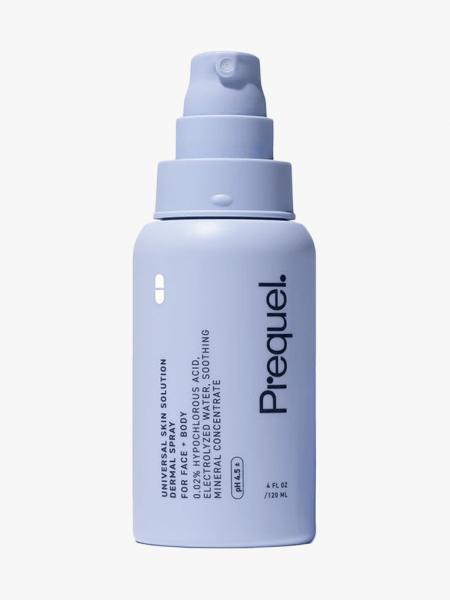
Prequel
Hypochlorous Acid Spray
Amazon
Jesa Marie Calaor applying Prequel Hypochlorous Acid Spray
Jesa Marie Calaor
Why we love it: Beloved at Allure HQ, in dermatologists’ offices, and beyond, Prequel’s Hypochlorous Acid Spray is like the little black dress of its category. Simple, versatile, and refined, it earns high praise from the pros. “This formula is super soothing, hydrating, and refreshing,” says Anna Chacon, MD, a board-certified dermatologist based in Miami. “It cleanses and purifies the skin, and it’s great for skin-barrier health. It also addresses skin-texture issues, dryness, and redness.” In addition to hypochlorous acid and electrolyzed water—which helps the formula cleanse the skin—Prequel’s spray is steeped in a mineral solution that helps dry skin retain hydration. Therefore, don’t be surprised if your complexion starts looking glowier and plumper after a few spritzes of this become a regular part of your routine.
Jesa Marie Calaor before applying Prequel Hypochlorous Acid Spray
Jesa Marie Calaor
Jesa Marie Calaor after applying Prequel Hypochlorous Acid Spray
Jesa Marie Calaor
Tester feedback from senior editor Jesa Marie Calaor
LargeChevron
“Wake up (redness). Work out (redness). Touch my face (more redness). My skin is extremely prone to inflammation, welting, and sensitivity. A quick all-over spritz calms my skin in minutes. I love the spray nozzle on this product—it creates a fine, even mist. As you can see from my before and after photos, this spray significantly reduced the welt I had at the corner of my mouth.” —Jesa Marie Calaor, senior editor
More to know
LargeChevron
- All ingredients: hypochlorous acid, electrolyzed water, mineral concentrate
- Sizes: 4 fl oz.
Best for Sensitive Skin: Tower 28 SOS Daily Rescue Facial Spray

Tower 28
SOS Daily Rescue Facial Spray
Revolve
Sephora
Nicola Dall’Asen applying Tower 28 SOS Daily Rescue Facial Spray
Nicola Dall'Asen
Why we love it: Is your skin a little temperamental? Having a few products on hand from Tower 28 may help calm it down. “This brand makes products designed for sensitive skin,” says Nava Greenfield, MD, a board-certified dermatologist at Schweiger Dermatology Group in New York City. Made with just three ingredients—water, sodium chloride, and hypochlorous acid—the SOS Daily Rescue Facial Spray “Can help with skin irritation and sensitivities,” Dr. Greenfield notes. Dr. Collins also stands by the product, which is something of a star on TikTok and other social media platforms. “This is a cult-favorite in the clean beauty world and for good reason,” Collins says. “It’s clinically tested for eczema, affordable, and great for calming flare-ups. It’s especially helpful for reactive or compromised skin.”
Nicola Dall’Asen before applying Tower 28 SOS Daily Rescue Facial Spray
Nicola Dall'Asen
Nicola Dall’Asen after applying Tower 28 SOS Daily Rescue Facial Spray
Nicola Dall’Asen
Tester feedback from senior news editor Nicola Dall’Asen
LargeChevron
“I wouldn't normally reach for an acid-based face mist over a hydrating one, but when you're in physical therapy three times a week, having a pore-clearing treatment on the go becomes a necessity. The SOS Facial Spray gives me the best of both worlds thanks to its hypochlorous acid, which isn't just antibacterial but also anti-inflammatory.” —Nicola Dall’Asen, senior news editor
More to know
LargeChevron
- All ingredients: water, sodium chloride, hypochlorous acid
- Sizes: 1 fl oz., 4 fl oz.
Best for Stressed Skin: Personal Day Trust Me On This Hypochlorous Acid Spray
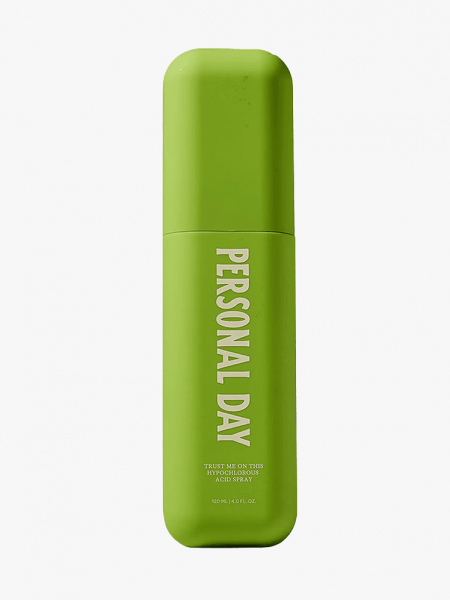
Personal Day
Trust Me On This Hypochlorous Acid Spray
Revolve
Allure associate beauty director Sarah Kinonen applying the Personal Day Trust Me On This Hypochlorous Acid Spray
Why we love it: According to Dr. Day, Personal Day Trust Me On This is “a gentle, dermatologist-approved mist powered by hypochlorous acid to calm redness, fight bacteria, and support the skin barrier.” She adds that the formula is safe for all skin types and ideal for soothing stressed, breakout-prone, or sensitive skin. “You can also use it anytime you need a quick refresh,” she says. The brand agrees, encouraging users to keep it on their desks for a mid-workday reset or to stash the disinfectant in a gym bag for a post-workout, bacteria-killing spritz.
Kinonen before applying the Personal Day Trust Me On This Hypochlorous Acid Spray
Sarah Kinonen
Kinonen after applying the Personal Day Trust Me On This Hypochlorous Acid Spray
Sarah Kinonen
Tester feedback from associate beauty director Sarah Kinonen
LargeChevron
“No joke, I have three of these bright green bottles floating around my apartment right now. And one more atop my desk at work. I'm obsessed! The lightweight mist is so refreshing that I've come to enjoy a few spritzes right after my daily Barry's class so much that my inflamed, post-workout skin practically craves it. I also like to spritz my cartilage piercings (I have two on my right ear) to keep the area nice and clean—those piercings are so sensitive and easily irritated!” —Sarah Kinonen, associate beauty director
More to know
LargeChevron
- All ingredients: water, hypochlorous acid, sodium chloride
- Sizes: 4 fl oz.
More hypochlorous acid sprays we love
Best Prescription-Strength: SkinSmart Antimicrobial Eczema Therapy

SkinSmart
Antimicrobial Eczema Therapy
Amazon
Why we love it: It’s rare that a Dr. Shirazi patient in need of hypochlorous acid spray leaves her office without a prescription (or, more aptly, an Amazon link) for a SkinSmart spray. “This is the one I typically recommend to patients, and I use it myself,” Shirazi says. “The formulation doesn’t use fragrances, alcohol, or harsh foaming agents.” It’s also easy to use on the go, she says—just spray it, let it air dry, and voila—and it won’t leave any residue behind. What’s more, the medical-grade formula is FDA-cleared, safe for sensitive and fragile skin, and available in different iterations to hone in on specific skin concerns. While this formula tackles eczema, the brand also offers hypochlorous acid sprays that treat acne and wounds, rashes, and burns.
More to know
LargeChevron
- All ingredients: hypochlorous acid
- Sizes: 8 fl oz.
Best Post-Procedure: Magic Molecule Daily Antimicrobial Skin Spray
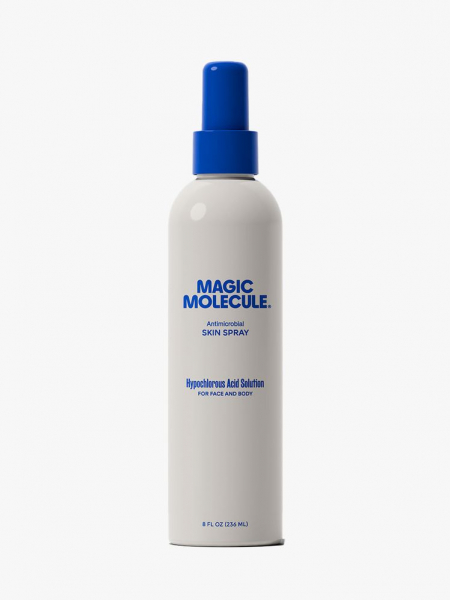
Magic Molecule
Daily Antimicrobial Skin Spray
Amazon
Nordstrom
Why we love it: After a cosmetic procedure—say, a chemical peel or laser treatment—the skin can become red or irritated. To promote healing, Dr. Shirazi recommends hypochlorous acid products like Magic Molecule's Daily Antimicrobial Skin Spray. “This focuses on high-purity hypochlorous acid, which I appreciate,” she says. “It’s especially nice for anyone looking for a targeted, science-forward approach to calming inflammation or keeping post-procedure skin clean.”
More to know
LargeChevron
- All ingredients: hypochlorous acid, ionized water, sodium chloride
- Sizes: 8 fl oz.
Best for Families: Briotech Topical Skin Spray
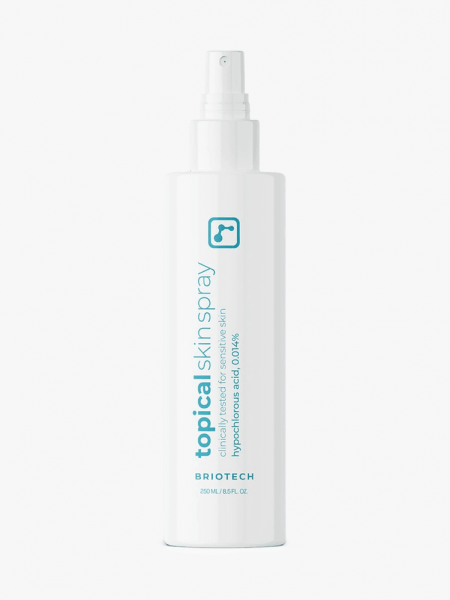
Briotech
Topical Skin Spray
Amazon
Why we love it: While some hypochlorous acid sprays, including the versions from Magic Molecule and SkinSmart, are packed with 0.18% of the active ingredient, Briotech Topical Skin Spray has 0.14%. The upshot? “This formula is incredibly gentle and versatile, and it’s good for everything from wound healing with minor cuts and scrapes to calming flare-ups,” Dr. Shirazi says. “This is a great option for families or those with multiple skin sensitivities.” And if you’re worried about sharing your skin spray with family members, rest assured: The brand’s made it available in sizes ranging from 2 to 128 fluid ounces.
More to know
LargeChevron
- All ingredients: hypochlorous acid, ionized water, sodium chloride
- Sizes: 2 fl oz., 4 fl oz., 8 fl oz., 33.5 fl oz., 128 fl oz.
Frequently Asked Questions
Does hypochlorous acid spray actually work?
Hypochlorous acid spray does work, as top dermatologists can attest. Azadeh Shirazi, MD, a board-certified dermatologist in La Jolla, California, says: “Hypochlorous acid spray can be very effective when formulated properly. It mimics a substance our own white blood cells produce to fight infection and inflammation. It’s effective yet gentle, helping support the skin’s natural healing process. I often recommend it for sensitive, eczema-prone, or acne-prone skin because it reduces redness and irritation without disrupting the skin barrier.”
Kristina Collins, MD, a board-certified dermatologist based in Austin, offers her take. “Hypochlorous acid (HOCl) spray can be highly effective when used correctly,” she says. “As a naturally occurring molecule in the immune system, HOCl has broad-spectrum antimicrobial and anti-inflammatory properties. It helps reduce bacteria on the skin, calm redness, and support the healing of conditions like acne, eczema, and minor irritations.”
How often should I use hypochlorous acid spray?
According to Dr. Shirazi, hypochlorous acid sprays can be used one to two times a day, depending on the skin’s needs. “For most people, applying it after cleansing, morning and/or night, is a great way to incorporate it into your skincare routine,” she says.
What should I not mix with hypochlorous acid?
“Even though hypochlorous acid is quite gentle, it’s best to avoid using it at the same time as strong actives like retinol or exfoliating acids, like salicylic acid, unless your dermatologist says otherwise,” Dr. Shirazi notes. Dr. Collins says that the ingredient does not generally mix well with vitamin C or glycolic acid, as mixing hypochlorous acid with other acidic ingredients could cause its pH level to shift and reduce its effectiveness.
To get the most out of hypochlorous acid spray, Dr. Shirazi recommends applying it to clean skin first, before toner, moisturizer, sunscreen, or other products. “This helps it do its job without being diluted or neutralized by other products,” she explains.
Meet the experts
- Azadeh Shirazi, MD, a board-certified dermatologist in La Jolla, California
- Anna Chacon, MD, a board-certified dermatologist based in Miami
- Nava Greenfield, MD, a board-certified dermatologist at Schweiger Dermatology Group in New York City
- Rachel Day, MD, a board-certified dermatologist based in Coral Gables, Florida, and chief medical officer at Zest Health
- Kristina Collins, MD, a board-certified dermatologist based in Austin
How we test and review products
When Allure tests a product, our editors look at it from every angle in an effort to best serve you. We review ingredients, scrutinize brand claims, and, when necessary, examine peer-reviewed scientific and medical studies. In addition to testing each and every product that's included in each and every review, we rely on experts who shape their fields, including dermatology, cosmetic chemistry, and medicine, to help us vet the ingredients and formulas.
For our list of the best hypochlorous acid sprays, we considered each product's performance across five primary categories: product ingredients and efficacy, packaging, fragrance, texture, and product wear. Every product was determined to have excelled in each category by our editorial team, which is composed of in-house writers and editors as well as contributors—along with special consideration from makeup artists, dermatologists, and cosmetic chemists. To learn more information on our reporting and testing processes, read our complete reviews process and methodology page.
Our staff and testers
A beauty product is a personal purchase. You might be searching for a face cream to address persistent dryness or a new nail product to add to your Sunday self-care routine; you may simply be browsing around for the latest launches to hit the hair market. No matter what you seek or your individual needs and concerns, Allure wants to ensure that you love anything we recommend in our stories. We believe that having a diverse team of writers and editors—in addition to the wide range of outside testers and industry experts we regularly call upon—is essential to reaching that goal.
After all, can we really say a skin-care product is the "best" for people over 50 if the only testers we've solicited opinions from folks who have yet to hit 30? Can we honestly deem a high-end diffuser worthy of your hard-earned cash if it's never been tested on curls? We're proud that our staff spans a wide range of ages, skin tones, hair textures, genders, and backgrounds, which means that we are able to fairly assess any beauty product that comes into the beauty closet.
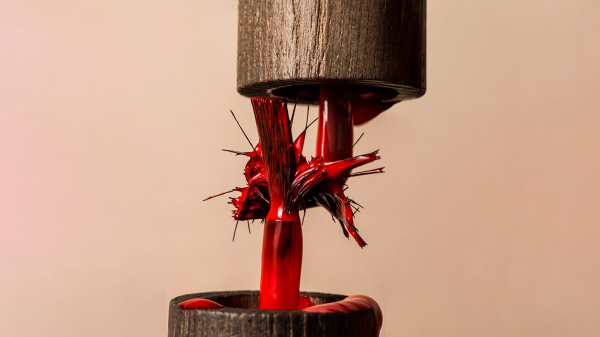
Why Are People Fighting About At-Home Gel Nail Kits on TikTok?
 Adobe StockSave this storySave this story
Adobe StockSave this storySave this story
All products featured on Allure are independently selected by our editors. However, we may receive compensation from retailers and/or from purchases of products through these links.
The biggest online beauty discourse of the past two weeks may be known on TikTok as mere “OPI nail drama,” but it’s brought about some pretty philosophical questions about the nail industry. Is it fair for nail technicians to charge upwards of $150 for a set? Is it OK for an untrained person to do their own gel nail polish or extensions at home? What’s worth risking for a free manicure? I’m sorry to say that not all of these questions have definitive answers—but I’m glad we’re talking about it for that exact reason.
Let me go back to the start. On July 8, Chicago-based nail technician Bethany Benigno posted a TikTok that has since amassed nearly five and a half million views. “I never thought we would see the day as licensed nail techs where OPI decided to finally sell out,” she said, shaking her head. “I’m beyond disappointed. I’m so sick of brands basically telling us to go fuck ourselves when we made them what they are.” She was referring to the recent release of OPI’s Gelement Gel Essentials Gel Nail Kit, which comes with nail prep materials, gel base and top coats, and an LED curing lamp for just $60. It’s intended for non-professionals to use at home in tandem with the brand’s new range of Gelement colors, which cost $16 a pop.
Benigno’s comments inadvertently started an uproar between nail technicians and consumers. Many viewers on either side interpreted her message as a woe-is-me sob story that blamed a decrease in business on at-home manicurists who now have access to gel nail polish and the like—and that perceived complaint seemed to have hit a nerve. Suddenly, it seemed like every video on my feed was a consumer criticizing nail techs writ large for overpriced services or limited availability. Things got heated fast. “Why are nail techs saying the words ‘nail tech’ like they’re surgeons?” one TikTok user posited in a video. In another, a user says, “You nail tech bitches really fucked up the industry and you priced yourself out and you let a billion-dollar company fuck with your bag.”
In response, other nail technicians started leaving comments and posting their own videos about whether OPI’s new at-home offerings are a good or bad thing for the industry. Many if not most of them seem totally unfazed by DIY manicurists because, while some people choose to do their nails at home, these licensed manicurists have still found clients who want professional treatment. Techs have even started their own meme of sorts, posting slideshows of their elaborate artworks to showcase the skillsets they’ve acquired through years of training and practice.
Suzie Moskal, a nail technician better known as Nail Career Education online, said of the at-home kit on TikTok, “I’ve been doing this for 40 years; this is nothing new… Talent is what carries you on as a good nail technician, not the product that you’re using.” Another nail artist who goes by the handle NailsByFaithB said, “Anyone can do their nails, anyone can get these products… I don’t care and I never will care.” Even Benigno herself carries this sentiment. I asked her if the use of professional-grade products among consumers has impacted her business or her livelihood at all, and her response was a resounding no. “DIYing has been a thing forever,” she says. “There will always be clients and there will always be DIYers. Some DIYers become clients, some clients become DIYers. That’s just the nature of the business.”
Plus, this is far from the first at-home gel kit, not even from OPI. All the way back in the early 2000s, a now-defunct offshoot of the brand released an at-home gel manicure kit called the Nicole by OPI Salon Gel Manicure, says the brand’s head of global education, Heather Reynosa. It included similar components as today’s iteration of the at-home kit, including a mini curing lamp, prep products, and gel polishes.
So why did Benigno post that video to begin with? As she tells me, “The kit itself is not the issue.” Instead, she’s frustrated that OPI’s at-home gel nail polishes cost less than its pro-only polishes, which cost $18.50 per bottle according to screenshots she provided from the wholesale professional retailer Cosmo Prof (which requires a professional license to access). “All that tells professionals is that [OPI] can sell their products [to us] at a lower rate, they just decide not to.” That’s the point she says she was trying to express in her video, but the internet did its thing and, in my opinion, blew things out of proportion.
I asked OPI about Benigno’s claims that the at-home polishes and lamp cost more than what you’ll see in salons. “Gelement is a smaller size bottle versus the professional GelColor bottle,” Reynosa says (Gelement polishes come in .3-ounce bottles, whereas the pro polishes come in .5-ounce). The kit’s affordability is also due in part to the fact that its curing lamp is built differently from that of a professional’s—Reynosa points out that it’s more compact, so users must cure their fingers and thumb separately. Plus, it only cures for 60 seconds at a time, as opposed to professional-grade lamps that have various timing settings.
Nevertheless, this whole situation has brought some deeply valid industry-wide concerns to light, bringing us to the real problem according to nail techs. Whether they work in a private studio, rent a booth, or are employed by a salon, nail technicians largely pay out of their own pockets for their materials, including polishes, tools, and hygiene and safety supplies—and the costs of these materials, Benigno says, have increased significantly in recent years. Even the most basic of things like nail files and latex gloves, she says, “have tripled in price.” For example, she says she paid, on average $8, for a gallon acetone five years ago but now pays $30. Her prices have risen in tandem with these operating costs; whereas she charged $40 for a gel manicure in 2019, she now charges $60.
Carmen Blake, a technician out of Ocala, Florida, points out that it’s not just the cost of supplies that’s rising for professional nail artists. “Prices of not only nail products but also booth or salon rent, licensing, continued education, cost of booking websites, and cost of advertisement continue to increase constantly,” she says. “The main factor in my prices was that I wanted to make a living wage after paying my booth rent and paying for my supplies.”
This is a familiar tale for pretty much anyone working in any industry right now, and it’s what’s actually impacting the livelihood of nail technicians, Benigno says—not the people who put on gel nail polish at home. “I know several nail technicians who have had to get second jobs to subsidize income, including myself. We cannot thrive if brands are pricing us out of business.”
And that’s the primary reason it’s currently so damn expensive to have a professional paint stuff on your nails or attach fake nails to your real ones. Beningo insists that the prices of professional nail services would come down if those operating costs did, too.
If there’s one thing nail technicians seem to agree on across the board, it’s that they hope people understand the ramifications of using certain products—including gel nail polishes—without the right precautions and application techniques. “I think the main potential issue that could come with gel products being more readily available to consumers is the framing… I think a DIY kit makes it seem very casual,” Blake says. “I fear this could lead to people treating these potentially harmful chemicals with the same care as you would painting your nails with an air-dry lacquer.”
As Allure has previously reported, people can develop serious allergies to gel if it comes into direct contact with their skin over and over again—causing a condition known as contact dermatitis, a type of rash that can be red, itchy, and even painful. That’s because, as Vivian Valenty, PhD, an organic chemist and inventor of the Dazzle Dry Nail System, explained to us in 2023, "Gel products contain two reactive ingredients called monomers and photoinitiators," which "belong to the chemical families called acrylates and methacrylates.” These ingredients are known to be skin sensitizers, which means that if they're accidentally absorbed into the skin, it can cause an allergy. (And anyone who’s ever tried a DIY manicure of any type knows that your first or second or 50th attempt will likely result in some polish making contact with the skin around your nail.)
Blake thinks DIY manicurists are capable of great work; that said, she is still concerned for their health. “I worry that larger brands making DIY kits more available for the average uninformed consumer will only contribute to [a rise in contact dermatitis among nail hobbyists].” Benigno concurs, offering advice to DIYers: “Make sure you’re buying the appropriate LED/UV lamps, curing for the appropriate time, and keeping product off the skin before curing.”
Reynosa says OPI is aware of this risk and has developed educational services—such as Geliversity, its range of online tutorials where professionals demonstrate gel nail polish techniques—for its at-home products in response. Additionally, “Robust testing has been done to ensure that, when used as directed, the Gelement line is a safe and sufficient at-home solution to getting a gel manicure,” Reynosa says. If you are doing a gel manicure at home, use a small nail brush or Q-tip dipped in acetone remover to get rid of any rogue polish before you cure it under the light.
As an untrained but relatively knowledgeable person who does her own gel manicures regularly (and has even written the guide on how to use the Gel-X system at home), I personally can’t judge if people largely ignore the potential for disaster and find themselves with a painful rash and a potentially lifelong allergy to gel nail products. It could possibly happen to me one day, and that’s a risk I know I’m taking every time I bust out my curing lamp instead of calling my local salon. But I, too, feel strapped for cash while simultaneously feeling societal pressure to look as “put together” as possible.
So I understand why this powder keg of consumer frustration about the price of nail services has exploded; it’s been sitting in a corner waiting to blow for a long time now. But if you ask me, the anger directed at nail technicians is widely misplaced. There seems to be an impression among the average salon-goer that nail technicians charge such high prices because they’re greedy—and I’m sure, just as there are in every industry, there are at least a few people who are acting in bad faith—but in reality, many of them are just trying to stay afloat. “Everyone cares about money because we have to. This isn’t greed, it's people caring about if they are going to be able to pay rent,” Blake says. “Which makes service providers frustrated to be told that their prices are too high when they can't even afford to have three meals a day.”
And in response, the people who want to see a professional feel, as Blake puts it, “gatekept from services they feel they deserve when they can't afford to have three meals a day, either. So everyone's just hungry, broke, and not sure what they are mad at, but know they are mad.” This discourse is a vicious cycle that has yet to land on a helpful or empathetic conclusion.
Whether we as the consumers can afford to have a regular nail appointment or have learned how to do our own nails to save money, we should all be pointing our frustration at the economic strain that makes nail services more expensive for everybody. (It’s worth noting that non-professional nail products are also more expensive than they used to be—just about everything is.)
Besides, the DIY nail community as we know it wouldn’t exist without professional nail techs—they’re the ones who showed us how to do it all in the first place. If you’ve ever Googled gel nail polish application tips or the best cuticle remover or tutorials on a trendy nail art look, you owe more to techs than you may realize. You might see them as the reason you can’t afford to go to the salon, but they’re also the reason your nails can still look nice regardless.
